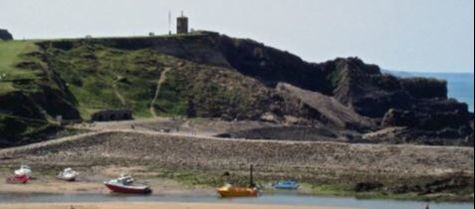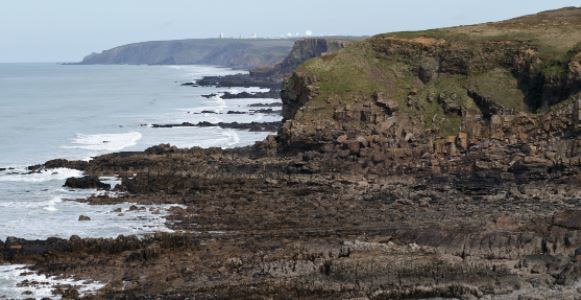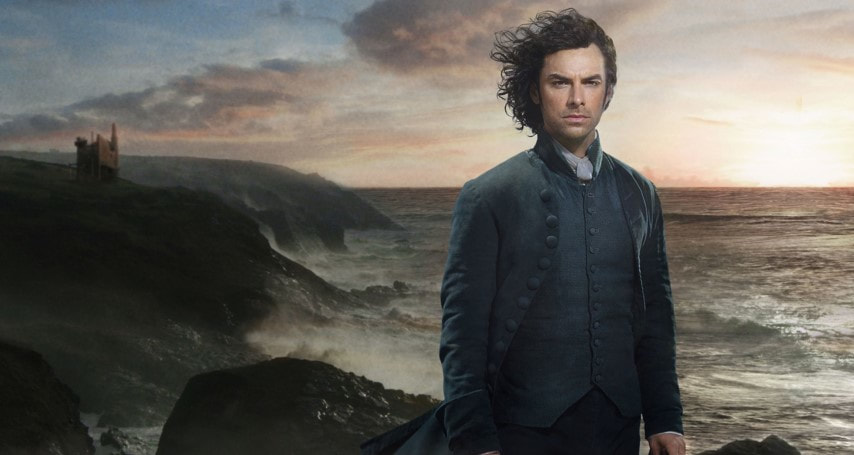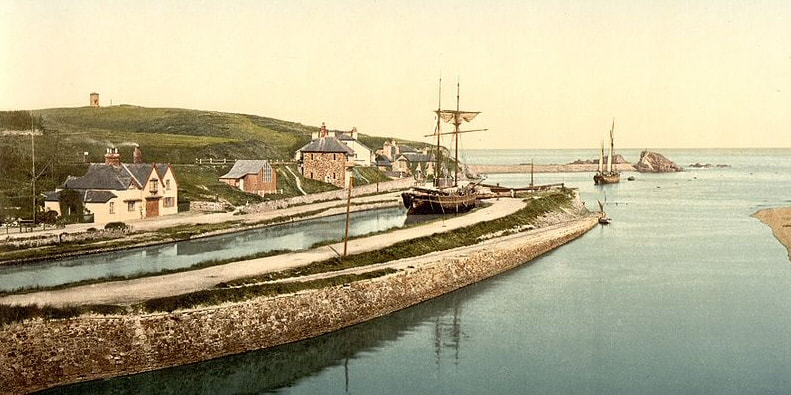Over a couple of centuries, Bude has turned from a barren ‘furzey down’ to a thriving, award-winning coastal resort. Many of you will already be familiar with its charms, but how many of these 12 fascinating Bude facts did you already know? If you know any others, let us know in the comments below!

1) What’s in a name?
Although it’s unlikely that Bude was named after the original St. Bede, the term bede was an old term for holy men, derived from the Saxon verb to pray or to bid. In the middle ages, Bude (or Budehaven) was little more than a chapel on a rock.
2) Sand demand
Bude Canal once stretched for 35 miles and was operational for 72 years until 1891. Its purpose was to ship mineral-rich sand to farming communities throughout the region. Unusually, its tub boats had wheels which allowed them to be hauled up various slopes on the route. The canal also includes the only manually operated sea locks in England.
3) Surfing savers
The British Surf Life Saving moment was started by an Australian man in Bude. Surf Life Saving is a movement that includes voluntary life guarding and competitive surfing and the Bude club is still very active.
4) The Railway Revolution
Bude Railway station was opened in 1898 to cater for increased demand in beach holidays during the late Victorian era. The railway had been gradually getting closer to Bude, having reached Holsworthy in 1891, and freight trains were a contributory factor in the decline of the canal. However, it was even shorter-lived, with the station finally closing in 1966.
5) Wandering masonry
Compass Point, a Bude landmark, is an octagonal tower originally built as a coastguard lookout in 1840. Due to coastal erosion, it was moved brick by brick 40 years later to its current position.

6) We could tell you, but…
Another feature of the Bude landscape are the satellite dishes of Bude GCHQ, near Morwenstow, which is the Bude area’s largest employer with over 250 staff. The work carried out there is necessarily very secretive, but the base has the power and authority ‘to monitor or interfere with electromagnetic, acoustic and other emissions and any equipment producing such emissions’- and thereby includes civilian and industrial espionage. The security checks to work there can take up to 9 months.
7) Cold cossacks
Bude has a similar latitude to Kiev in Ukraine, which sees average winter temperatures of around -6°C. Instead, Bude’s average high is 19.6°C, and average low is 3.6°C. That’ll do nicely.
8) Don’t forget the sun-cream!
Bude’s coldest recorded temperature was −11.1 °C (12.0 °F) during February 1969, and its warmest was just 7 years later in 1976, a toasty 32.2 °C (90.0 °F). Bude gets more hours of sunshine than most British towns and in 2013, it was officially the sunniest spot in the country!

9) Layers of history
The geology of Bude is of national importance, and includes a Site of Special Scientific Interest. The ‘Bude formation’ is composed of multiple layers of compressed sand (‘turbidites’) and mud, and can be easily seen in the local cliffs. These layers were created under ‘Lake Bude’ which existed 300 million years ago.
10) Climbing success
In 2006, the world record for a female team climbing the height of Everest was broken at Fusion Gym in Bude. The team of 8 women climbed the staggering 8,848 metres on a ‘versaclimber machine’ in just 2 hours, 45 minutes and 53 seconds.
11) Tales of tragedy
Bude’s worst shipwreck was the Bencoolen (named after a colonial city in Indonesia), a cargo vessel that had set sail from Liverpool in 1862. Tragically, 27 sailors lost their lives on Summerleaze in a ferocious gale. Multiple attempts were made to rescue them as they were so close to shore, but only 6 men were saved. Much of the wood from the ship was used to build parts of the town, and the ship has given its named to local features including a pub and a road.
12) Power to the people
The population of Bude is now around 10,000 – that’s more than triple what it was 100 years ago, although the increase in population is showing signs of slowing.
There we have it! Our 12 fascinating facts. Do you have any others than we didn’t include?
Let us know below!



